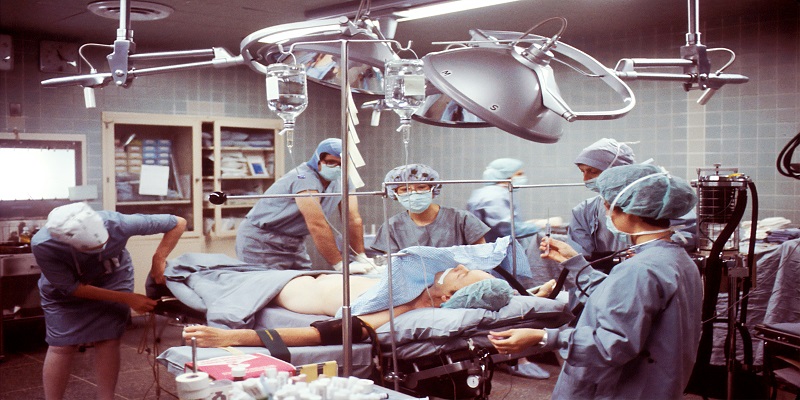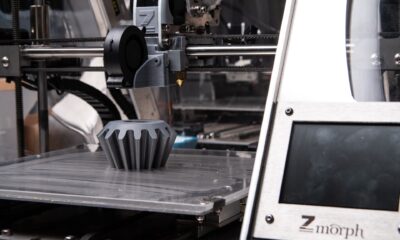Healthtech
Groundbreaking Advancements in surgical technology

Introduction
Advancements in surgical technology have ushered in a new era of operations, pushing the boundaries of what was once deemed possible. From robotics to virtual reality, surgeons now have access to a range of cutting-edge equipment that was once only seen in science fiction. These technologies enable surgeries to be performed with enhanced efficiency and precision, revolutionizing the field.
Examples of Advanced Surgical Technologies
Surgical technology encompasses various groundbreaking advancements, including Da Vinci robotic surgery, 3D printed implants, and single-incision surgery.
- Da Vinci robotic surgery involves the use of a robot to assist surgeons in performing minimally invasive procedures such as heart, gynecologic, and urologic surgeries. The Da Vinci surgical system, a sophisticated robot, lies at the heart of robotic surgery. With multiple robotic arms controlled by the surgeon, the system replicates the surgeon’s hand movements with exceptional accuracy. This level of control enhances surgical precision and ensures optimal outcomes.
- Another remarkable innovation is 3D-printed implants, which are custom-made for each patient using biocompatible materials. These implants find applications in joint replacement and skull reconstruction, among other conditions, offering personalized solutions.
- Single-incision surgery, on the other hand, involves performing procedures through a single incision, resulting in reduced scarring and faster healing times. This technique is employed for various surgeries, including hernia repair and gallbladder removal.

The impact of surgical technology on patients’ Quality of Life
The impact of surgical technology on patients’ quality of life is significant. Robotic surgery, for instance, has gained popularity due to its ability to enhance precision and minimize invasiveness. This results in quicker recoveries, reduced pain, and improved outcomes for patients. Additionally, 3D printing enables the creation of custom implants and prosthetics, catering to unique anatomical needs and potentially reducing surgical times and recovery periods.
While still in the early stages, these technologies hold immense promise for enhancing the well-being of surgical patients. As they become more accessible, we can anticipate further remarkable advances in surgical care.
The utilization of surgical technologies in preoperative planning has transformed the efficiency of surgical procedures. Advanced tools like 3D printing and virtual reality enable surgeons to gain a comprehensive understanding of the anatomy and visualize the procedure before entering the operating room. This meticulous planning minimizes unexpected complications, ultimately contributing to improved patient outcomes and even life-saving interventions.
In addition to preoperative planning, surgical technologies also enhance intraoperative care. Robotic-assisted surgery, for example, allows for precise movements and reduced tissue damage, resulting in faster recoveries and reduced scarring.
The evolving landscape of surgical technology is reshaping the medical field by making operations safer and more efficient. As the field continues to progress, the future of surgery looks increasingly promising.
Robotic surgery represents one of the most cutting-edge advancements in surgical technology today. It empowers surgeons with unparalleled precision and accuracy, promising significant improvements in patient outcomes.
Robotic surgery has demonstrated its effectiveness in various procedures, including heart, cancer, and gynecologic surgeries. In many cases, it has proven superior to traditional methods. For instance, studies have shown that robotic heart surgery is associated with lower complication and mortality rates compared to open-heart surgery.
Disadvantages of Surgical Advanced Surgical Technology
Despite its advantages, robotic surgery is not without risks. Complications can arise in any surgical procedure, including those involving robotics. Furthermore, as a relatively new technology, its long-term effectiveness and safety warrant ongoing research. Nonetheless, robotic surgery represents a significant leap forward in surgical technology, poised to play a crucial role in the future of medicine.
Conclusion
Patient safety remains paramount in the field of medicine. Minimally invasive surgical techniques offer a means to achieve this goal by enabling surgeons to operate through smaller incisions, thereby reducing the risk of infection and other complications. These procedures can often be performed using local anesthesia, further minimizing risks.

































